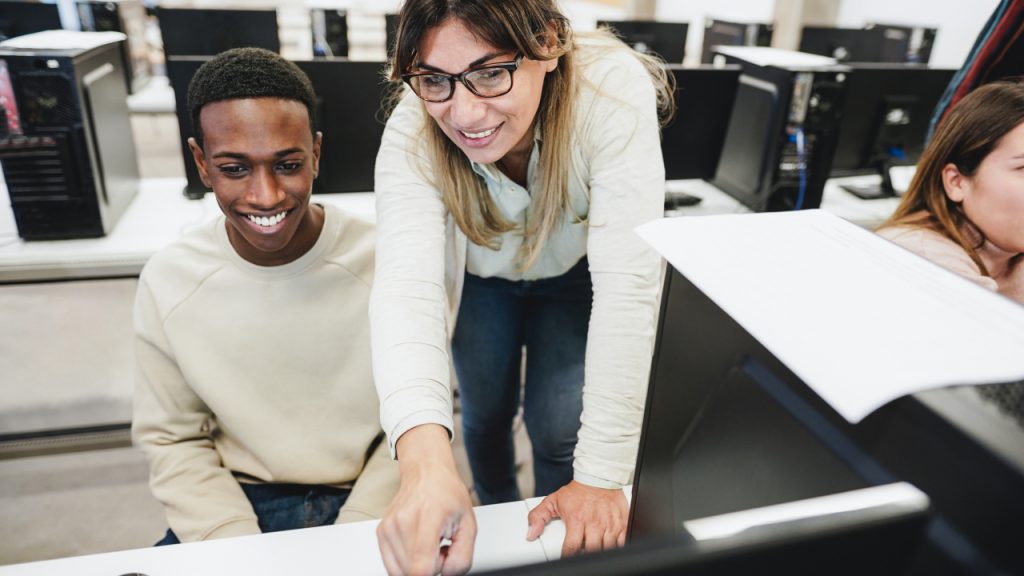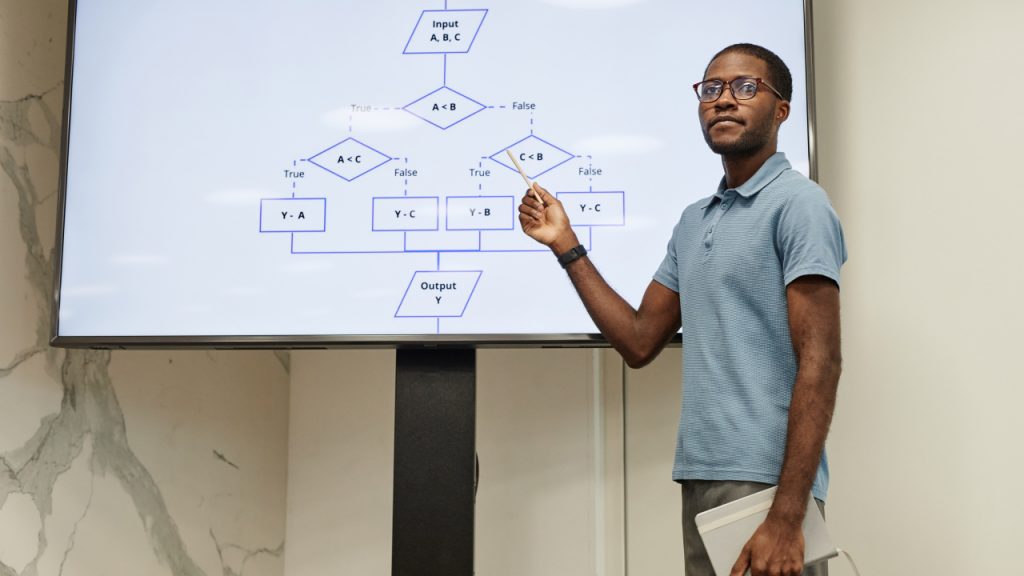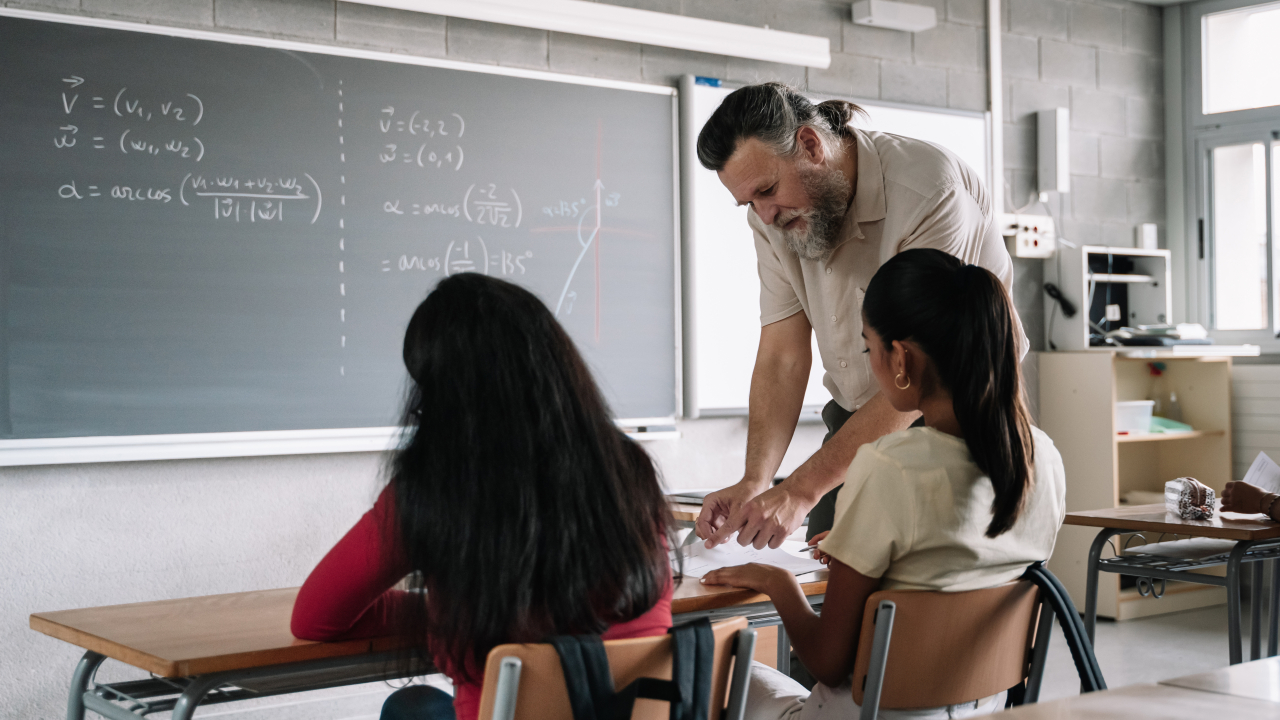Although blended learning is not a new method or concept in education, it has gained more popularity lately. It was generously implemented when schools were closed due to the COVID-19 pandemic to maintain learning continuity and motivate students during hard times.
Blended learning is a method that combines technology and digital media with traditional instructor-led classroom activities, allowing students to personalize their learning experiences.
What Is Blended Learning?
Due to the importance of computers and other sophisticated devices in today’s commerce and communication, integrating technology into education helps prepare students for success in the workplace. At its core, blended learning is a method that combines both in and out-class activities for better learning and teaching outcomes. Students who learn in a mixed learning environment grasp the studied subject and technology usage.
The blended learning strategy is not complete without in-person instructions. For students’ improvement, listening skills must be developed in addition to their visual and kinesthetic abilities.
Advantages of Blended Learning

Both students and instructors gain from blended learning. Because students live in a technologically advanced society, blended learning benefits them in several ways. However, this method ont only affects students but also helps teaching staff to stay more organized and enhancing engagement with their students in more meaningful ways.
Personalized learning
The student-to-teacher ratio in the United States is not one of the best. With big class numbers, it might be impossible to personalize lessons or recognize each student’s unique requirements. Blended learning has the potential to change this.
Individualizing learning modules based on competency is easier with blended learning. Students in the same classroom can progress at different speeds, and teachers can observe whether students are more interested in a specific subject or want additional attention in a particular subject.
Use of online and offline technologies
The implementation of blended learning provides professors and students with the best of both worlds. Students have the opportunity to try out new software and hardware through blended learning. Getting familiar with such technology will come in handy in their future projects and pursuits.
Lower costs

Blended learning can be a good choice when educational institutions explore methods to give their students a personalized learning experience without increasing expenses.
Blended learning requires professors, but it takes less of their time, saving money on travel fees and training materials. Online schools typically offer lower costs. That’s because most materials are virtually accessible, and buildings require no maintenance fees. Textbook expenses are also reduced since online resources are sufficient to meet students’ academic demands.
Interactive experience
Interactive online modules can allow students to learn at their own pace prior to class, while also allowing teachers to provide more individualized instruction in person. Thanks to interactive online modules, professors can be much more deliberate about what they want students to study before class and how to best use class time to reinforce what they have learned.
More flexibility
The flexibility that blended learning offers comes in terms of availability. The blended learning method allows students to access the necessary materials anytime and anywhere while enjoying the benefits of in-person lectures. Additionally, it gives access to information and resources on a global scale that fit the student’s interests and levels of knowledge.
Blended learning enables fast learners to grow more quickly. At the same time, struggling students can move at their own pace and get customized support where they’re stuck.
Boost of digital intelligence
Blended learning offers students more flexibility in their studies by improving their learning environment, which raises student achievement. Allowing students to deepen their comprehension through independent topic inquiry enhances the learning experience.
Stimultanuesly, students are pushed to use technology, and by the continuous use of different tools, they boost their digital skills. Because blended learning is scalable, instruction remains effective at every step, setting students up for tremendous success as they acquire the 21st-century skills they need to shine.
Disadvantages of Blended Learning
While the blended learning approach benefits students in various ways, some drawbacks should not be overlooked. We can more effectively overcome the disadvantages of blended learning by being aware of them to guarantee better student results.
Need to acquire technological skills
The technology devices used in blended learning must have efficient and easy usage. IT literacy can be, in most cases, a bigger problem for teachers than for students. Inadequate training programs for the teaching staff can lead to ineffective lessons. On the other hand, students who don’t primarily have technological skills will have to do more work to catch up with the rest of their peers; otherwise, they will be left behind.
Lack of motivation and plagiarism
Another drawback is that, depending on how blended learning is set up, it can make participants less motivated. A blended learning strategy may not be appropriate for every individual, task, or subject. Unmotivated students would lead to another problem, plagiarism. In the world of e-learning, plagiarism is a well-known problem.
Online students might find it difficult to resist the urge to use a computer or smartphone to search for something when they are not motivated to study. In such cases, professors should be extra careful when assigning tasks and checking the homework assignments’ credibility.
Interested in pursuing a degree?
Fill out the form and get all admission information you need regarding your chosen program.
This will only take a moment.
Message Received!
Thank you for reaching out to us. We will review your message and get right back to you within 24 hours.
If there is an urgent matter and you need to speak to someone immediately you can call at the following phone number:
- We value your privacy.
Blended Learning Models

The implementation of blended learning methods can take many different forms but typically involves one or more of the following models.
Face-to-face
As its name suggests, the face-to-face blended learning method emphasizes active student-teacher interaction. It is appropriate for students of all ages, from elementary students to those in higher education. The majority, though not the only form of delivery, is through classroom instruction, where students will be present in person.
The goal behind the face-to-face model of blended learning is to employ online resources to educate and train people who might need extra help on particular topics. The face-to-face model’s other key feature is that it will frequently be utilized to push high achievers beyond the teacher’s usual learning objectives.
Rotation
The rotation model uses online and in-person instruction, frequently given in classrooms, as other blended learning models do. The rotation model differs from other blended learning models in that it has a set timetable for the two different ways education is delivered. In other words, students will have a schedule for online learning that is just as clearly organized as their time in the classroom.
Flex
The entire teaching students receive under the flex blended learning model is given to them via a computer. Usually, as students enter a classroom, computers are available for each student. They are free to come and go as they wish to do their work because there are no defined periods when a lesson or lecture will start. In other words, the computer hardware and any instructional software offered to students enable them to design their learning. Notably, this will imply that learning proceeds at each student’s own pace even when they are frequently in the same physical place as their classmates.
Online driver
The online driver is a type of blended learning in which students learn remotely and most of the content is supplied online. This blended learning style is appropriate for students who require more independence and flexibility in their daily schedules. Even though in-person check-ins are optional, students can typically ask teachers questions online via chat.
Conclusion
Blended learning produces an integrated classroom where the requirements of all types of learners will meet by combining in-person and online learning. Additionally, keeping students interested, excited, and motivated helps professors be more productive and achieve more with their students.
If students have a pleasant experience with learning during their former years, they may be more likely to seek further education.
It sure can be challenging to alter conventional teaching methods. However, the new blended learning environment has some very advantageous features that are worth the effort.








